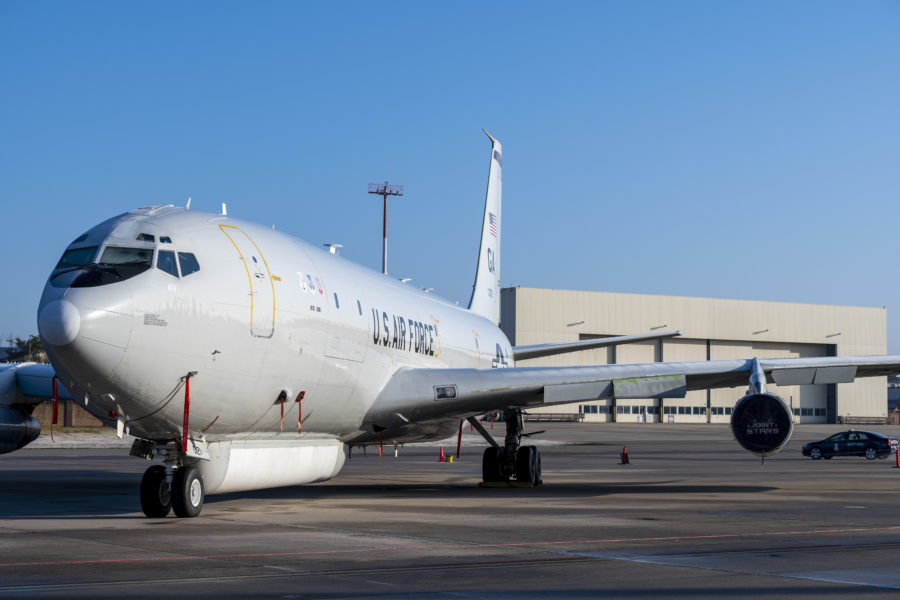The Air Force canceled its Pacific-based Advanced Battle Management System on-ramp later this year after it already cut back the scope of its most recent event in Europe because of Congressionally mandated budget cuts.
Congress, in the fiscal 2021 defense policy bill, questioned the need for the wide-ranging exercises. Lawmakers claim the Air Force doesn’t have clear priorities or planning for ABMS, which began as a replacement for the E-8C Joint STARS and morphed into a massive overhaul of how the service can connect sensors, aircraft, and assets in other domains. The skepticism and cutbacks are limiting how the service is planning and operating the on-ramps, as the Department of the Air Force enters a new budget cycle that is expected to keep the Pentagon’s funding limited.
The service last month held the fourth demonstration in Europe, showcasing variously technology aimed at new ways to connect sensors and shooters locally at Ramstein Air Base, Germany. The even focused on base defense and ways to better link sensors and aircraft in the Baltic Sea.
The funding cut meant the Europe event could not include new “user interface and applications” that would have presented new ways to “leverage data for information advantage and decision superiority,” said Preston Dunlap, the Air and Space Force’s chief architect, in a March 17 roundtable. U.S. Air Forces in Europe also “had the opportunity to do more agile operations,” but that too had to be curtailed in favor of defensive operations because of funding.
USAFE boss Gen. Jeffrey L. Harrigian told Air Force Magazine the command shifted its own funding into the European ABMS onramp because it was such a priority. This included taking money from the command’s information technology accounts to address IT-related issues in the event.
Although smaller than originally planned, the European event still demonstrated several new capabilities focused on three mission sets:
- Dynamic targeting
- Base defense
- Agile operations.
Companies on the ground or operating remotely included Amazon, Juniper, SpaceX, ViaSat, Apogee Research, Kratos, and Anduril, among others. Each worked “side by side with our operators to be able to get capabilities over the finish line and to harden them and to make them usable for the activity,” Dunlap said.
For example, the Air Force Research Laboratory’s Ninja counter-UAS system linked up with Anduril’s Sentry sensor towers in the base defense scenario, while SpaceX’s Starlink internet communication system moved unclassified and classified data from local systems and military satellite communications “back and forth in a way that’s never been done before,” Dunlap said.
A C-17 also moved classified data through its “organic” satellite communications capability to handheld Apple and Samsung tablets, with which operators could interact, in what Dunlap said was a step toward “getting the power of the ops center or the intel center in the palm of your hand.”
The Air Force is planning its fifth event this summer, with the goal to focus on “decision superiority and information advantage;” survivable, agile, and distributed operations; and rapid all-domain kill chains, Dunlap said.
The sixth planned event in Pacific, which was canceled because of the funding shortfall, was to also include Australian forces. It would have built upon the framework of the Europe event, which was the first to include allies, “in a real operational environment,” Dunlap said. It also would have been the second ABMS on-ramp to take place in the Pacific—the third demonstration took place in the region in September 2020.
The event “would have been very helpful to drive this forward and add in more partner nations as well to the networks,” Dunlap said.
“We’ve got to be able to test, and experiment, and demonstrate, and operate like we fight and where we fight,” he said. “We need not just the ingredients, but the recipe, and we need to test the recipe where we need to operate.”
